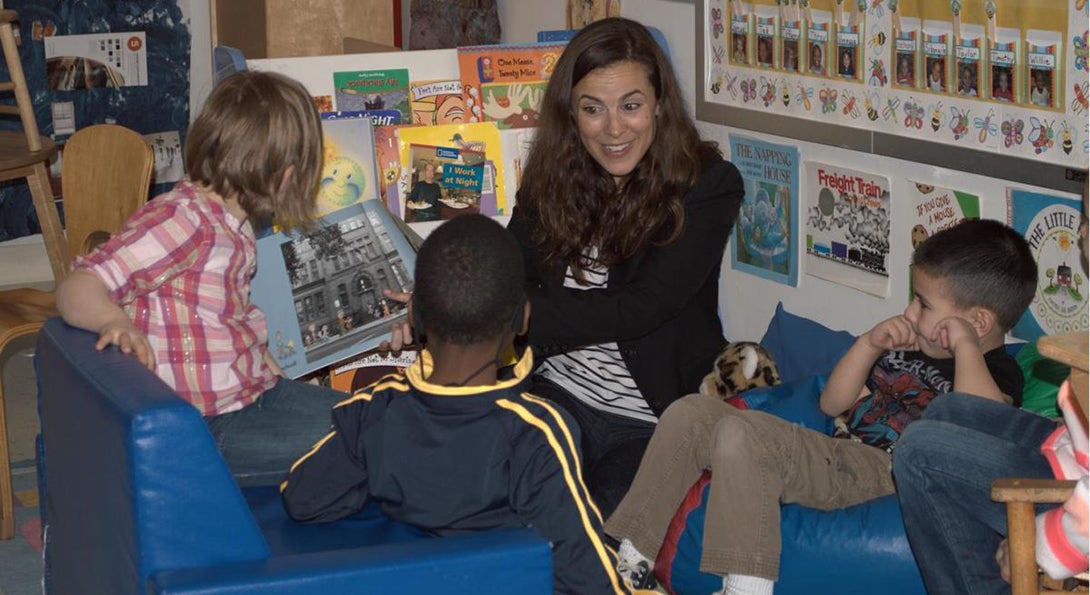Literacy Development for At-Risk Students

Introduction
For Samantha Richardson, MEd Language, Literacies and Learning alumna, third grade is the ending point. As a reading specialist and literacy coach at Evanston/Skokie School District 65 north of Chicago, Richardson targets the third grade as the point in which the district’s early childhood learners need to be reading at grade level to have a shot at success in their educational careers.
Looming over the target is the district’s heterogeneous population, in which its children speak more than 50 languages and 40 percent of children are considered at risk for literacy development because of early or multiple birth, English language learner status or low socioeconomic status.
Richardson coordinates literacy development in 15 classrooms at the Joseph E. Hill Education Center and runs the district’s Smart Start Literacy Initiative working with all reading teachers in the district.
“We have a lot of families that are working multiple jobs and have the best of intentions but are just trying to make ends meet,” Richardson said. “We’re trying to help build background knowledge for these kids, especially those really at risk, because they often lack background knowledge to be successful when going into the elementary years.”
The Smart Start initiative works directly with families to build literacy learning capacity in the home. Children in the district are screened at the pre-K level for developmentally appropriate literacy skills such as alphabet recognition, rhyme awareness and print word recognition. With federal grand funding from the Child Parent Center program, a parent liaison works with families of kindergartners and first graders to develop take-home literacy lessons. The liaison’s role is greater than simply a literacy coach; the goal is to be a holistic ally for the family, advocating for health care needs, aiding with job searches or anything else an at-risk family might need.
The holistic model is expanded through a Cradle to Career initiative that brings in resources from Foundation 65 and the Child Care Network of Evanston to build literacy capacity in the district’s families.
For second language learners with Spanish as their primary native language, Richardson aids in running a two way immersion program with a goal of developing bilingual literacy skills. In pre-K, instruction is 90 percent in Spanish and decreases 10 percent each year as the child moves forward.
As a coach, Richardson works with early childhood classroom teachers to create literacy-rich environments. Her focus is finding ways to embed literacy through play. She coordinates professional development sessions on emergent writing and emergent reading and creates subject area field trips for building background knowledge, such as visiting an ecology center in Evanston.
Richardson is a Reading Recovery certified teacher, creating individual interventions with the lowest 20 percent of readers at the first grade level, targeting struggling readers before academic content becomes more difficult.
“Reading Recovery instruction has helped me as a coach because I feel much more effective when I work with teachers,” Richardson said. “Working with children focusing on literacy but also building capacity within our teachers, I’m really closely watching our kids move up through the reading levels.”